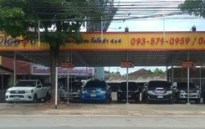[ad_1]
Not every car accident is caused by negligence on the part of a driver. While most auto accidents are caused by a driver’s failure to respond appropriately to a dangerous situation or inclement weather, defective vehicles cause injuries in car accidents every year, and sometimes even cause the accidents.
Manufacturer Recalls
Often manufacturers discover a defect after a vehicle has been on the market for several months. In most cases, the entire production line of that vehicle is not recalled, but a general notice is sent out advising individuals who have purchased that model to return to a dealer and have the problem fixed.
Many states have a “lemon law” which requires a manufacturer to replace an individual’s car if it has had the same defect replaced or repaired a certain number of times within a given period of time. Most states have a three-repair law in effect.
If a defect on your vehicle causes an auto accident after a general recall notice has been sent out, the manufacturer of your car may not be liable for your accident. You can make yourself aware of any recalls on vehicle parts by visiting the manufacturer’s website or requesting a list of recalled parts on your vehicle from the manufacturer.
Injury Caused by a Defective Part
Defective vehicle parts like faulty tires can cause an accident, and they can also cause or worsen an injury in an auto accident caused by something else. Examples of faulty parts that can increase injuries include:
- Faulty seatbelts
- Airbag failure to inflate
- Delayed airbag inflation
- Explosive gasoline tanks
- Faulty crumple zones
- Poor vehicle design (such as doors which fall away when struck or seats not properly attached)
Safety Component Activation
A vehicle component does not have to be defective on every model to be considered a contributing factor in your car accident. If the airbag inflates correctly in ninety-nine collisions, but fails to deploy in one, it is still considered defective in that particular vehicle.
Although a vehicle must be struck from a certain range of direction and speed for the airbag to deploy or the seatbelts to lock in a restraining manner, these devices are designed to be fairly sensitive and should at a minimum operate correctly in a car accident. Hopefully they will protect the driver and passengers from injury or death.
If you have been hurt in a car accident and would like a free legal consultation, please visit the website of Polewski & Associates, serving Dallas and the surrounding areas of Texas.
[ad_2]
Source by Erich Shrefler

 2/1 Rattanakosin Road,
Si Phum, Muang, Chaing Mai
CONTACT# 0932387148
2/1 Rattanakosin Road,
Si Phum, Muang, Chaing Mai
CONTACT# 0932387148
 19/8 Moo.3 Makham
Tia, Muang, Surat Thani.
CONTACT# 0935790959, 0986716951
19/8 Moo.3 Makham
Tia, Muang, Surat Thani.
CONTACT# 0935790959, 0986716951

